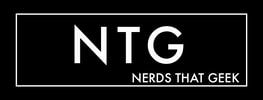Written by John Edward Betancourt Mick Garris in Season 2 of ‘Horror’s Greatest’. (Photo Courtesy of Shudder.) Mick Garris in Season 2 of ‘Horror’s Greatest’. (Photo Courtesy of Shudder.)
Caution: This article contains spoilers for Episode 204 of ‘Horror’s Greatest’. To revisit the previous episode, click here.
One particular aspect that we don’t talk about enough when it comes to visual storytelling, is the importance of having the right soundtrack. Because fifty percent of the experience when it comes to film and television is impacted by the sounds we hear, especially in horror. For instance, if Freddy Krueger’s glove made a squeaky noise when he stabbed a teenager or if a laugh track played when a Romero zombie opened up the abdomen of an unfortunate soul… we would be taken right out of the story. We need that hideous squelching noise, and we also need quality music to accompany some of those scenes. Because a musical sting lets us know that something ominous awaits or that the villain is but inches away from causing great harm. Not to mention, music can outright set the mood, set a scene and take us on an emotional journey as it plays out alongside the horror. If anything, the importance of sound editing, and film scoring is top of mind today because it was featured in the next episode of Horror’s Greatest on Shudder. In fact, ‘Film Scores’ was nothing short of a masterclass lesson in how both of those elements work and how closely they tie into the experience and it brought about such lessons by way of a grand and sweeping look at music and sound editing in the genre. Wherein we came to learn that in many ways… horror film scores adapt with the times. For the grandiose golden era/dawn of horror, featured scores that matched the era they were a part of. Since they were bombastic and massive and as powerful as the monsters they revealed. Which gave way to more subtle scoring as the years carried along. The kind that worked tightly with the script and the overall vibe the director wanted to bring forth… so that the score felt organic. Something audiences craved and still crave. Now for a great example of how that works, look no further than the score from Jaws. Since that used those simple notes to inform us that something was lurking beneath the waters. Something big, something ominous. Which made the arrival of the shark all the more impactful in nature. Not to mention, a score can just… enhance the emotional aspect of the story. As evidenced by The Omen. Because everything that Jerry Goldsmith recorded has a real gothic vibe to it, one that is ominous and evil and utterly horrifying as it becomes clear that Damien is something more to the fate of the world. All courtesy of a score that feels as though a church sermon has gone wrong. Not to mention, a score when done right, can truly evoke an emotion, which is what the score for The Shining manages to accomplish. Because the use of various stock scores in addition to the minimalist score from Wendy Carlos and Rachel Elkind creates a jarring experience. One that evokes a sense of unease and worry, that only adds to the atmosphere of fear Stanley Kubrick worked to bring forth. As for what the story had to say about sound editing, it simply corrected pointed out what we covered earlier, that horror tends to perfectly land the right noise, the right squelch, to really sell the ick, and well, all of the explorations brought forth a fascinating chapter in this journey. Because it truly showcased an aspect of film and television that deserves more recognition. Because music is critical to the story, as is the right sound mix and this particular tale really did offer up newfound appreciation for the scores we know. Since now we properly understand the care that went into crafting musical notes that are as terrifying as the monsters that appear on the screen. Until next time. Watch ‘Horror’s Greatest’
0 Comments
Leave a Reply. |
Archives
March 2025
|
|
© 2012-2025, Nerds That Geek LLC.
All Rights Reserved. |
uWeb Hosting by FatCow

 RSS Feed
RSS Feed
